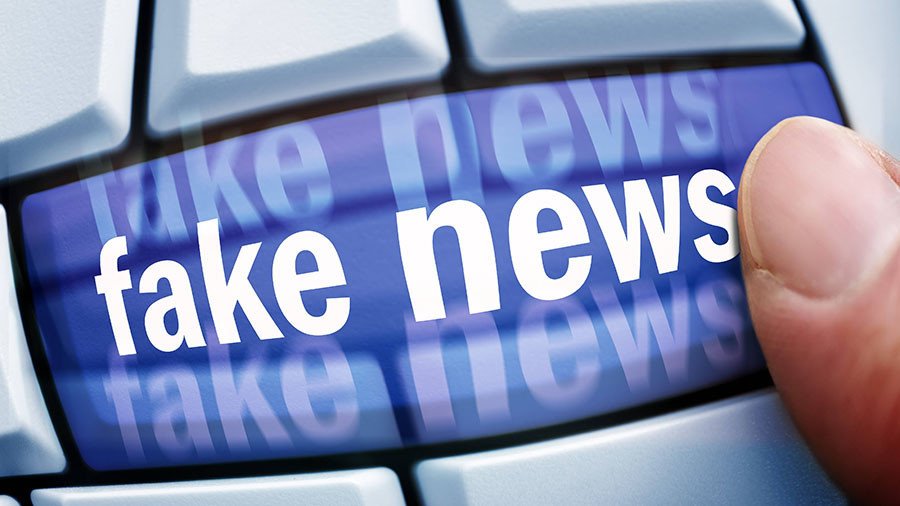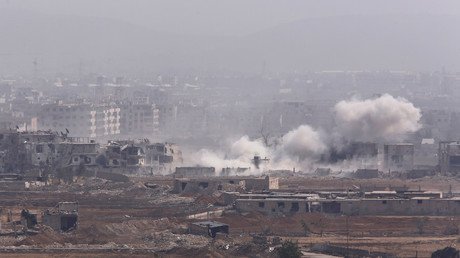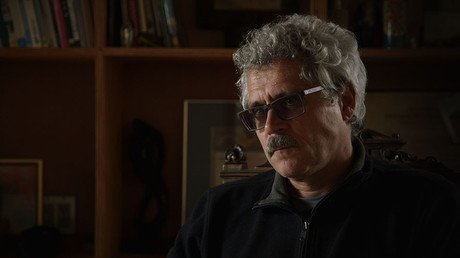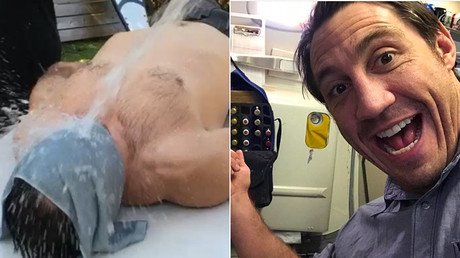Propaganda instead of truth: Lawyer tells RT how fake news becomes fake evidence in court

Digital media and social networks have created a powerful tool for propaganda, which uses manipulation and deception to produce fake news. The same images are increasingly seeping into courtrooms as evidence, a barrister told RT.
The modern age made production and distribution of media content cheap, simple and uncontrollable. Anyone with a phone can take photos or a video, upload them online and potentially have millions of people see them. This ‘open source content’ has been increasingly used by mainstream media and governments to back this or that cause before the public.
While the manipulation of public opinion with such “fake news” causes damage in itself, the same evidence is also finding its way into courts of law, Michael Swainston, Queen's Counsel from Brick Court Chambers, told RT. The barrister, who has extensive experience in international litigation, moderated a panel on the problem, which was held on Thursday as part of the St. Petersburg International Legal Forum.
“After creating propaganda, particularly in international cases, some of the authors of it present it as evidence. And obviously evidence can affect proceedings, unless you are very careful in dealing with it,” he explained to RT.
Producers of manipulative digital content are quite sophisticated and know many tricks that make forensic analysis of such images difficult, he said. For example, original content is usually uploaded from an anonymous account to social media before being distributed, which among other things strips metadata. Imbuing the “fake evidence” with credibility is a multi-staged process, during which first some purported expert vouches for it, then mainstream media pick it up and report it as fact, and only later does it make its way into a courtroom.
Swainston suggests that digital evidence should be held to a higher standard of verification, with techniques applied not unlike those used by historians studying written sources, which may be very misleading if taken at face value.
“One has got to look at context, who is the author of the material, what’s the chain of custody of the data, what processes have been applied to it,” he said. “And also one has to have in mind the burden of proof: if somebody’s case is true, normally they should be able to produce primary evidence, not just pictures and video.”
The lawyer said he has a good example from his own experience in defending Russia in a case against Georgia, which was filed after the 2008 war. An image was submitted to the court showing a piece of a Russian rocket lying on a sofa, supposedly after a projectile hit the house.
“It was supposed to come from the roof on one side of the room, crossed the room, landed gently on the sofa for people to photograph,” he explained. “It turns out that the photo was taken by a US Navy photographer as part of a State Department mission after Russia pulled out of [the city of] Gori in Georgia.”
Courts should carefully scrutinize suspicious digital evidence, preferably by calling in people who produced it for cross-examination, Swainston believes.
The barrister also noted another alarming trend, which was showcased during the panel by Philippe Bartsch, a fellow lawyer who managed to overturn bans of 28 Russian athletes from competing over doping allegations at the Court of Arbitration for Sport (CAS).
“He was complaining that whilst the case against them [Russian athletes] was very public, his challenge in the case was confidential because the process of the arbitration was confidential,” Swainston said of Bartsch’s words during the session. “That’s my experience in international litigation as well – the evidence gathering is confidential. That seems to me a problem, because it potentially means that cases are used for propaganda instead of truth.”
The CAS proceedings among other things cast serious doubts on the credibility of Grigory Rodchenkov, a Russian anti-doping laboratory chief-turned-whistleblower, whose words were the cornerstone for the allegations backed by the World Anti-Doping Agency (WADA). Most of his accusations against Russia and Russian athletes turned out to be hearsay during cross-examination at CAS.
Think your friends would be interested? Share this story!
















